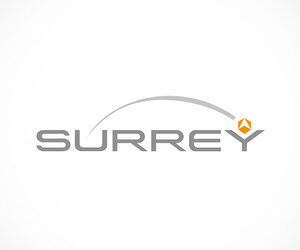HydroGNSS twice as good
ESA’s HydroGNSS mission will now comprise two identical satellites to halve the time it takes to revisit the same place on Earth’s surface and re-measure various climate variables such soil moisture. Having two satellites in orbit will significantly improve the science that this exciting new Scout mission will yield.
With the development of the first HydroGNSS satellite already underway, this second satellite will now be built in parallel so that they can be launched together. Liftoff is planned for 2025.
Orbiting Earth 180 degrees apart, the two identical satellites will use a technique called Global Navigation Satellite System (GNSS) reflectometry to measure important climate variables such as soil moisture, freeze–thaw state over permafrost, inundation and biomass – all of which are linked to Earth’s water cycle. The satellites will also measure wind speed over the ocean and sea-ice extent as secondary products.

HydroGNSS is one of the new Scout missions being developed within ESA’s Earth Observation FutureEO programme.
Embracing the concept of New Space, a Scout mission consists of one or several small satellites that can rapidly prototype and demonstrate novel ways of observing Earth from space. The two satellites will each measure just 50x50x70 cm, and each weigh about 65 kg.
Rapid development is key – the idea is that a mission only takes three years from kick-off to launch. The budget is tight too, just €30 million, which covers the development of the satellites and ground segments, launch and the in-orbit commissioning phase.
The second HydroGNSS satellite is covered within this set budget.
Complementing ESA’s larger Earth Explorer research missions, Scouts are developed to demonstrate key value to Earth science and practical applications, while retaining the potential to be eventually scaled up to bigger satellite missions.
Jean-Pascal Lejault, ESA’s Project Manager for the Scout missions, said, “We are very happy to announce that the HydroGNSS mission will be a two-satellite constellation. This is clearly going to double the amount of data they return and do it in half the time compared to the case of having one satellite.”

Phil Brownnett, Surrey Satellite Technology Limited (SSTL) Managing Director, said, “We are delighted HydroGNSS has become a multi-satellite mission. It’s especially encouraging to be enabling such an exciting ESA science mission with data generated from a small SSTL satellite.”
Crucially, HydroGNSS will deliver valuable information on global soil moisture. Understanding more about this variable is vital for climate monitoring, agriculture, meteorology and mitigation planning for drought and floods.
By providing valuable data on the Earth’s water cycle, HydroGNSS will address data gaps that will arise when missions such as ESA’s SMOS and NASA’s SMAP come to an end. It will also complement data collected by ESA’s future essential hydrology mission, the Next Generation Gravity Mission, also supported by the FutureEO programme.
The technique of GNSS-reflectometry may be the only future affordable and sustainable means of taking global soil moisture measurements at a resolution of better than 25 km. The hope is that HydroGNSS will pave the way for this type of mission for the future.
Furthermore, biomass knowledge is vital for better understanding of the global carbon cycle. HydroGNSS is expected to complement ESA’s upcoming Biomass mission by taking measurements outside the larger satellite’s operational area, and its faster acquisition could play a new role in forest fire disturbance monitoring.
SSTL in the UK is Prime Contractor for the HydroGNSS Scout mission and is partnered with scientists from: Sapienza University of Rome, Italy, Tor Vergata University of Rome, Italy, Institute of Space Sciences (IEEC/ICE-CSIC), Spain, Institute of Applied Physics (IFAC-CNR), Italy, Finnish Meteorological Institute, Finland, National Oceanography Centre, UK, University of Nottingham, UK, Vienna University of Technology, Austria.















 Germany
Germany
 Austria
Austria
 Belgium
Belgium
 Denmark
Denmark
 Spain
Spain
 Estonia
Estonia
 Finland
Finland
 France
France
 Greece
Greece
 Hungary
Hungary
 Ireland
Ireland
 Italy
Italy
 Luxembourg
Luxembourg
 Norway
Norway
 The Netherlands
The Netherlands
 Poland
Poland
 Portugal
Portugal
 Czechia
Czechia
 Romania
Romania
 United Kingdom
United Kingdom
 Slovenia
Slovenia
 Sweden
Sweden
 Switzerland
Switzerland































